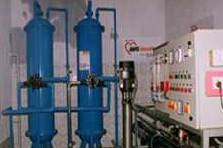Life Help Disaster Mitigation Programme
Gujrat Earthquake Relief Programme
Bhuj, Gujarat- January 2001
The 2001 Gujarat earthquake occurred on January 26, 2001, coincided with the 51st celebration of India’s Republic Day. The location of the epicentre was Bhuj-Gujarat, India. With a moment magnitude of between 7.6 and 8.1, the quake killed more than 20,000 people and injured another 167,000 and destroyed near a million homes throughout Gujarat and parts of eastern Pakistan. The earthquake is considered an intra-plate earthquake because it occurred a great distance from any plate boundary, so that it maid vast destruction and the people and the area were not well prepared for an earthquake of such size.
We have responded to this emergency by providing drinking water for the affected people. This was the first initiative by Life Help Centre for the Handicapped to help the disaster victims. We have sent water bottles and cans from our Green Valley Pure water. We implemented this in collaboration with a local Ngo.
Kashmir Earthquake Relief Programme
Uri, Jammu & Kashmir October 2005 – December 2008
The earthquake that occurred on the 8th October 2005 made the people to live in a deplorable condition and they lost all their belongings and shelter. By considering the situation Life Help Centre decided to work in the affected villages and implement various relief and rehabilitation programme.
Life Help Centre distributed Relief material-packs to 8 villages benefiting 831 families of Uri, Materials like blanket, rice, other provisions, biscuit, candle, matchboxes, woollen clothes, etc were distributed.We also worked in co- operation with Vishwagram, a voluntary organization from Gujarat and provided Medical & Trauma Counseling for the people of affected areas in Uri. A group of 15 members from Vishwagram set up a camp base in a village named Basagran for a period of one month. Life Help Centre monitored the activities like Medical Camps, Group Activities, games, etc which are implemented for the children and the youth in order to bring them out from fear and anxiety.
Life Help Centre constructed 325 temporary shelters in the Uri sector for the earthquake-affected families in order to protect the people from cold and rain. The Shelters have been constructed using Timber, Tin sheets and Ply woods. The villagers from Basagran, Sarai, Chappel and Baila were benefited this support. Life Help Centre also distributed Water Tanks for the 285 beneficiaries for those who received the shelters, since they all were suffering without water and they were in the situation to store the water for long run.
We have implemented a project of supporting 30 children below the age group of 10 years who all are lost their parent in the earthquake. We have provided support for their education, recreation and other needs.Life Help Centre also constructed a single storied school building at Baila in URI sector. Baila is a small Village in Boniyar Taluk, of Baramulla District and it is a newly formed township for the earthquake victims from different villages namely Ishem, Kamalkote, Nava Runda, Gargote, Gowalan, Gawatha and Chakra. The Government of Kashmir had decided to provide all the basic amenities for the settled families in private-public participation. As there are no schools in and around the village Baila and there are nearly 158 children at the age of school going living in the village, it was felt necessary to construct a nursery and primary school for the children in order to provide access to better facilities to obtain basic education.
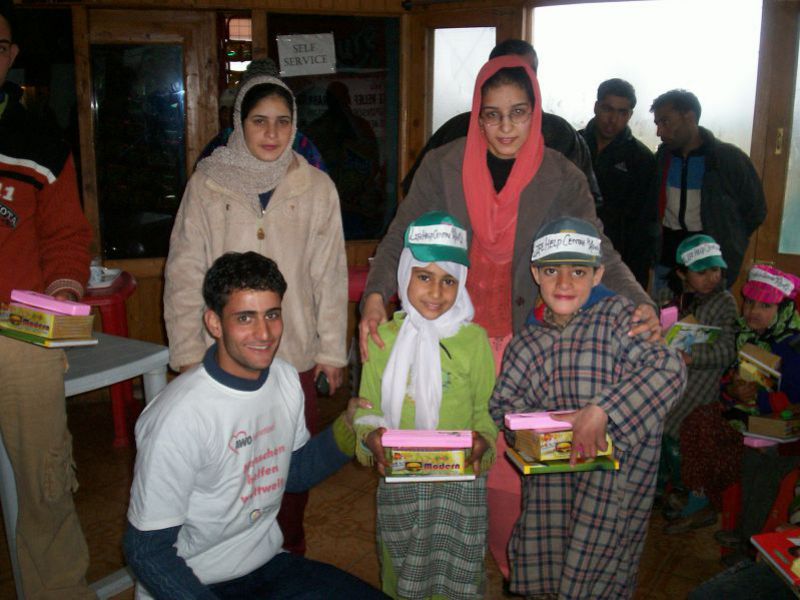

Kurnool Flood Relief Programme 2009
Kurnool, Andhra Pradesh. – October 2009
The massive flood in the Krishna River wreaked havoc in Kurnool, Krishna, Guntur and Nalgonda districts of Andhra Pradesh as enormous quantities of water were released from Nagarjunasagar dam and Vijayawada’s Prakasam Barrage inundating about 478 villages in 87 mandals, including all island habitations. Over 13 lakh people were affected in five districts of Andhra Pradesh following unprecedented floods in Krishna river basin which has claimed 86 lives. The flood claimed 15 lives and 6,189 cattle loss in the worst-affected Kurnool district. About 25,000 people were trapped in Kurnool town as worst floods in recent memory inundated the district in Andhra Pradesh triggered by heavy rains in Karnataka. Also the famous temple town of Mantralaya, the seat of Raghavendra Mutt in Kurnool district, was submerged under water and people climbed to rooftops to save themselves from the heaviest flood in River Krishna ever in more than 100 years.
By analyzing the situation Life Help Centre responded immediately and a medical team of 8 members traveled up to Kurnool from Chennai along with an ambulance carrying enough stock of medicines. The State Volunteers of Life Help Task Force were in the field to support the medical team. The team implemented free general medical camps in the affected villages of Kurnool district for six days and reached more than 14 villages and 2674 people were benefited out of this intervention. Simultaneously our team did an assessment and they found the need of Drinking water, Cloths, Temporary shelters and improvement of sanitation facilities. Based on the need assessment we found the immediate need of cloths we mobilized clean and neat cloths from Chennai and it has transported to our Life Help Task Force office opened in Kurnool.


Nisha Cyclone Relief Programme 2008
Cuddalore, Tamil Nadu. November – December 2008
The deep depression over southwest Bay of Bengal intensified into a cyclonic storm, ‘NISHA’ over southwest Bay of Bengal and lay centred at 0830 hours IST on 26th November 2008 close to Vedaranniyam. It caused to heavy rain fall in the areas and near by districts inundated. Number of people becomes homeless and shifted to relief camps.
In this situation as per the request from Cuddalore district Administration Life Help Centre involved in a short term relief operation and helped thousands of flood affected people. Life Help Centre for Rural Rehabilitation and Development and life Help Health Services actively implemented this programme along with the Life Help Volunteers of Life Help Disaster Management and Coordination Unit.
The people were in the midst of water and lived in a very poor hygienic condition. The rivers, in and around Cuddalore – Chidambaram Districts were over flooded and water inundated to villages. It caused extensive damages to the human lives, livestock’s, crops and other infrastructures like roads, bridges and public properties.
The people become like isolated in an island. With the coordination of government authorities we started our relief activities in the 25 affected villages on the immediate needs and provided food packets, drinking water and medical support.
Chidambaram Flood Relief Programme 2007
Cuddalore, Tamil Nadu. October – November 2007
When the water discharge in the Coleroon has exceeded to 1lakh cusecs, most of the villages in Chidambaram and Kattumannarkoil taluks were faced inundation and affected very badly. Due to backflow in the channels, Thittukattur, Akkarai Jaikondapattinam, Perambattu, Keela Kondalapadi, Pazhaiya Nallur and Kattu Koodalur in Chidambaram taluk, and, Omampuliyur, Muttam, Kanjankollai, Karupperi and Kunjamedu in Kattumannarkoil taluk have been put on alert. The peoples were evacuated from their houses to cyclone shelters and other high areas. We have observed the situation and decided to help the people in Chidambaram area.
Life Help Centre provided cooked foods for the affected people for more than a week. We provided the food support in the Chidambaram taluk villages namely Thandeswaravallur, Chidambaram ward 22, 21, 28, Parangipettai, C.Thandeswaram, Kamaraj nagar etc.,. More than 5,000 peoples were benefited with the daily food provision. Life Help Centre for Rural Rehabilitation and Life Help Disaster Management and Coordination unit were monitored the
relief programme.
Biahr Flood Relief Programme August 2007
Madhubani, Bihar, August – October 2007
Heavy rains, both in the upper and lower catchments of the North Bihar and Nepal forced the rivers to release water in large volumes and it caused serious flooding in the North Bihar region. By the mid of July the monsoon become so harsh and heavy rainfall made almost all the river was over flowing and the small dams (Mud Blocked wall) was broken due to the inundation of rain and flood water up to 4- 5 feet . The flooding affected the 19 out of 38 districts of Bihar causing extensive damage to infrastructure, human lives, livestock, crops and other property and assets and forced the people to live on the roof for 15 days. Muzaffarpur, Madhubani, Darbhanga, Patna, were the affected districts by the devastating flood. We did a situation study and contacted several organisations in Bihar and finalised to work in the Madhubani District in collaboration with a state level voluntary organisation called SSVK.
Life Help Disaster management and Co-ordination Unit team did a need assessment and observed the worsened condition of the region. It was seen that the people’s condition are becoming poorer. So in order to find a solution for this, LHC decided to conduct an emergency medical camp in the selected villages. The relief programs were carried out in three Phases in Jhanjharpur and Madhepur of Madhubani district. In the First phase, we did the medical aid programme in which we screened 12658 people by providing general medicines as part of preventive measures, while screening the people we identified the other needs of the community and we distributed dry ration which contained 30 kg of rice, 5 Kg of Daal and 15 Kg of Atta for the 10 villages covering of 2020 families. In second and third phase we distributed same quantity of dry ration to 1533 families and 1950 families.


Kurnool Flood Relief Programme July 2007
Kurnool, Andhra Pradesh, July – September 2007
The depression formed in the Bay of Bengal caused heavy rainfall and inundation in all the coastal and interior areas of Andhra Pradesh. Kurnool, Prakasham, Godhavari West, Guntur and Krishna were the most affected districts. The disaster caused widespread damage in Kurnool district, where 14 people died. The major affected areas in this district were the river banks and low lying areas. The Hundhry River showed its red face to the people those who never faced a flood in past 20 years and not even think about such emergency.
In this scenario, life Help Centre from Chennai responded to the disaster quickly and initiated the relief program of providing medical support to the affected families. We got support from the state level voluntary organisation namely SARDS, SPAN and SADHANA. The whole team took their effort in planning, mobilizing the people and arranging the logistics for the relief program. Our Medical team consisting 15 members provided medical aid to the affected population in the most affected areas. Based on the need analysis the schedule of the medical camps was planed in different slum dwellings. The medical camps were carried out from 02.07.2007 to 08.07.2007 in the affected villages. We have reached 16 main villages (12 villages in Kurnool district and 4 villages in Nandyal area) and everyday we treated around 150 to 250 people in each village.
We also took initiative ness to improve the hygienic situation of the slum people. Almost all the public toilets were damaged due to the flood and our team observed the difficulties of women and children. The team done a need assessment and selected a village and processed the renovation of a 32 seated toilet. The selected village had a population of 1000 families and the renovation works got started in August 2007 and in September 2007 it was opened for the public.

Cuddalore Flood Relief Programme 2005
Cuddalore, Tamil Nadu. October – December 2005
In October 2005 almost eleven districts, downstream from the Stanley reservoir at Mettur of Tamil Nadu was under water following to the heavy discharge from reservoirs in Karnataka due to good rains. On October 24, the administration had issued a warning, when the reservoir received record inflows of 2.24 lakh cusecs and discharged over two lakh cusecs. The water level of the Mettur dam becomes 120.25 feet against its capacity of 120 feet. The inflow was 75,176 cusecs and outflow 74,933 cusecs. The floods had damaged 3,311 houses in 18 villages and submerged crops on 1,233 hectares beyond redemption. It was a terrible situation for the people of Cuddalore district and most of the low lying areas were in undated. The people were not able to cope up the situation without any external aid.
Life Help Centre started the relief operation on 27th October and distributed 4.5 lakh food packets to the flood affected people of Cuaddalore, Chidambaram and Kattumanar kovil taluk. We implemented this operation as in four phases (Phase 1: 27th Oct- 1st Nov, Phase 2: 6th Nov-11th Nov, Phase 3: 23rd Nov-5th Dec, Phase 4: 10th Dec-23rd Dec ).
Apart from the food aid we have constructed 250 Thatched Houses in 4 villages namely Veeran Koil Thittu, Akkarai jayamkondapattinam, Thittukattur and Keelagundalabadi. We also constructed the 4 flood relief shelters in the same villages and it become very helpful for the people during the floods which happened recently.


Indian Ocean Tsunami 2004
In the wake of December 26th 2004, the disastrous waves took the people of almost 10 countries in its fold. The destructive waves named ‘Tsunami’ not only swallowed the lives of people but also left thousands of them helpless and troubled. The Great Sumatra earthquake of 26 December 2004 did not cause shaking-induced damage to the mainland of India, but the consequent Indian Ocean tsunami had a significant effect on the southern peninsular region of India.
The tsunami severely affected the coastal regions of the eastern state of Tamil Nadu, the union territory of Pondicherry, and the western state of Kerala. About 8,835 human lives were lost in the tsunami in mainland India, with 86 persons reported missing. The Livestock along the coast, as well as bridges and roads, suffered extensive damage. Structures were damaged by direct pressure from tsunami waves, and scouring damage was induced by the receding waves. Many of the affected structures consisted of non-engineered, poorly constructed houses belonging to the fishing community.
There were about 1 lakh families displaced and many of them lost all their belongingness and the death tolls in Sunday’s tsunami strike in Chennai rose to 188. Kancheepuram 108, Cuddalore 486, Villupuram 42, Nagapattinam 2,414, Kanyakumari 665. 40% of those killed are children; reported case stated by the government of Tamil Nadu. But it is noted that there are 100s of missing families and unreported cases of deaths and unidentified bodies.
Life Help Centre synonymous to its name took immediate action towards Tsunami relief activities and worked in the coastal stretch villages of Cuddalore district of Tamil Nadu. It was important to help and rehabilitate people by providing clean drinking water, adequate sanitation, basic nutrition and primary medical care and providing shelter for the victims. LHC also provided Common infrastructure like Fish Drying Yard, Dry Fish Store Room, Fish Net Mending Shelter, Community stage, Renovation of Balwadi school and the community centre, Installation of 3 High mask light, at Pudupettai village, which the people have lost in the Tsunami. Also Life Help constructed 75 group houses for the families who have lost their houses.
The fishermen community families in the target area had, prior to the tsunami, good levels of income, and could be considered part of the middle class economically. After the relief phase the team felt that Life Help Centre would work with the target group and to involve in different development and rehabilitation programmes and provide better opportunities for them.
Medical Camps & Hygiene Promotion
Life Help Centre took immediate efforts in serving the needy by means of providing health assistance and more particularly focusing on preventive health to fight against epidemic. The medical team consist of doctors, nurses and para medical staff implemented free medical camps, health check-up and hygiene promotion. As part of preventive measures Life Help Centre has provided medical vaccination camp against typhoid in the coastal villages of Chennai, Puducherry, Cuddalore and Tuticorin district. We did reach around 62000 people in about 139 coastal line villages.
As part of Hygiene promotion Life Help Centre took initiative to implement village cleaning programmes in various villages. The programme benefited to improve the general environment and surroundings of the villages. The programme implemented as cash for work and many people got benefited by the programme and the income they gained made a relaxation for their financial situation.
Trauma Counselling and Training cum Recreation Programmes: – LHC also carried out counseling activities for the children and the young adults who were traumatized due to the natural calamity – Tsunami. Counselling services was provided and benefited for around 4000 children who were affected psychologically in the 16 villages of Cuddalore district. Various Arts & Craft work, weekend camps, recreational activities, sea exploration, sight seeing activities, various sports activities and competitions were conducted for the beneficiaries of coastline villages of Cuddalore District.
Distribution of Relief Materials
During the observation and assessment our team found that the village namely Pudupettai didn’t receive any relief support and the people were really in need. So Life Help Centre did need assessment and decided to provide food provision for the affected people. Life Help Centre distributed a relief packet for 1000 families of the village. The relief packet was included Rice, Wheat and Daal.
Livelihood Supports
During the relief programmes one of the major challenge faced by our team were the continuous request and demand of the victims for their survival. The people were really upset since they lost their livestock like, Boats, Fishing nets, Boat engines, tool kits, dress materials, Cattle, Petty shops, etc. The team discussed about the needs of the people with the community leaders and came up with a proposal of distributing the same items to the people which lost during tsunami.
The tsunami affected the fisherman villages and most of them lost their belongings and live stocks. So that our team given priority for the needs of the fisherman community. Life Help Centre built fish drying yard, fish store room and fishnet mending shelter in many places as common infrastructure for the village people. We have also distributed Boats, Fishing nets, Boat engines, and other fishing tools for the people those who all lost their these items. Life Help Centre also supported the people to do the repair of the damaged boats, nets, boat engines, etc.
During the assessment our team found around Boat mechanics around the coastal villages of Cuddalore district and most of them lost their tools since that was all kept in the sea shore. Likely almost all the carpenters also lost their tools. By considering the situation Life Help Centre distributed tool kits for 40 Boat Mechanics and carpenter tool kit for almost 100 carpenters. The tool kits were purchased based on the list produced by the government authorities and the tool kits were distributed in presence of the District Collector of Cuddalore at his campus.
Common infrastructure like Fish Drying Yard, Dry Fish Store Room, Fish Net Mending Shelter, Community stage, Renovation of Balwadi school and the community centre, Installation of 3 High mask light, at Pudupettai village, which the people have lost in the Tsunami. Also Life Help constructed 75 group houses for the families who have lost their houses.

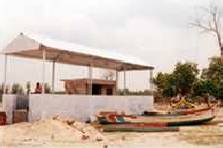
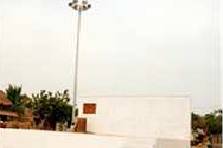
Village Reconstruction – Pudupettai, Cuddalore District
The Tsunami has destroyed the main means of livelihood and shelter of a majority of the villagers at Puduppettai. With the relief and rescue operation continuing on war footing in the Tsunami affected areas there is a dire need to rigorously work upon reconstruction, infrastructure and housing. As per the Collector’s records, 95 families have lost their boats and nets, their only means to earn a living; 155 families have lost their homes. There is an immediate need to restore means of livelihood and shelter for the basic survival of these families. Life Help Centre decided to enter in whole village reconstruction and implement various rehabilitation programmes in the village in collaboration with international NGO’s AWO International and Welthungerhilfe from Germany.
As part of the livelihood support we have provided new boats and engines for 95 families. We have also repaired the engines, provided fishing nets&accessories and refurbished the damaged boats. Tools for the Boat Mechanics and the Carpenters were also provided. We start enter in the construction activities in Pudupettai village and constructed individual permanent houses for the 155 Families in the government allotted land and as per the government directions.
A unanimous request from a majority of fisher folk in the village was to help in the purchase and installation of a focus light on the beach. They felt that with the current situation, the beach area was completely dark at night and visibility was low. This made the beach unsafe for the villagers. So we have installed three high mass focus light at the strategic places on the beach and it provides light which increased the visibility in the area.
Life Help Centre also constructed various public infrastructures for the community. As part of improving sanitary facilities LHC built drainage canal about 315 meters around the village and 30 toilets for the people. LHC also constructed fishing net mending hall of 1600 Sq. feet, Dry fish store room of 250 Sq. Feet and fish drying yard of 4000Sq.Feet. As part of renovation programmes LHC had renovated a community care centre of 1000Sq.Feet and a balawadi school of 1500Sq.Feet.
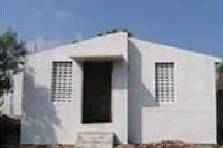
Intervention in Tuticorin District
Tuticorin district lies on the coast, about 700 kilometers south of Chennai. Life Help centre landed at a village named Manapadu where the impact of the Tsunami has significant. The total population of the village is 7594 where the men are 3788 and the women and children are 3806. The population of the villages consists of the fishermen community with Dalit families forming a minority. Most of the dalits work on secondary occupations related to fishing and are generally dependant on the fisher community for employment as well. The people in the village have lost all their Boats, Nets and Engines and nearly 1500 houses were destroyed due to the tsunami.
Life Help Centre did a need assessment and implemented many distribution programmes in considering the livelihood factor. 6 Boats and Engines provided to the Tsunami affected fishermen families. The Boats were manufactured at the Life Help Boat Yard, Cuddalore. The boats and engines were transported to the Manapadu village. The boats and engines were distributed to the tsunami-affected fishermen benefiting a group of 25 fishermen in the ratio of 1:5.
7 Sewing machines provided to the youth girls of the fisher families for making sustainable income. 5 Tricycles provided to the orthopaedically disabled individuals for their easy mobility. 500 Saris and dhotis provided to the men and women of the Manapadu village. The distribution ceremony of all the items was arranged in presence of Mrs. R. Anitha Radhakrishnan, Minister for Housing & Urban Development and the Tuticorin District Collector, Mr. Chandrasekaran at Manapadu village.
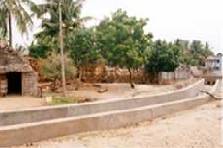
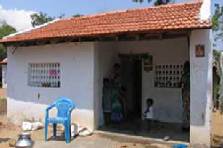
Life Help Pure Water plants
The Tsunami also deteriorated the ground water table by increasing the TDS to higher level turning the water salty and unsafe for human consumption. With great efforts from the government and non – governmental organisations – the drinking water is being transported village to village by trucks, but these efforts are not in regular intervals due to the vast area coverage and also this programme was only for a short period.
As Cuddalore is a flood prone area, pure drinking water is and had always been a problem. To find a permanent solution for regular supply and availability of pure drinking water in the long run, Life Help Centre proposed the installation of 10 drinking water plants with a capacity of 3’000 Liters per hour output, and to store 24’000 liters of pure drinking water to cater to the needs of these primary 16 villages and also to make available pure drinking water to 32 additional villages behind the coast line. Hence, these 48 villages would at any given point of time have 240’000 liters of pure drinking water in store to provide a total population of 200’000.
As an integrative part of the initiative comes the promoting of Self Help Groups of women, to whom the pure drinking water plants will be handed over. Life Help Centre has formed and trained such women’s SHG’s in these villages. They will earn a living through marketing the pure drinking water The income earned will be utilised for the maintenance and running costs of the plants and at the same time generate an acceptable income to the woman SHG’s. Life Help Centre has been working in the last 12 years in manufacturing pure drinking water for the city of Chennai and has its own registered brand of pure drinking water named “Green Valley Spring”. LHC thus has substantial expertise and working experience in the field of health safety and feels that the installation of reverse osmosis technology equipment would solve the problem of scarcity of water in the long run.
